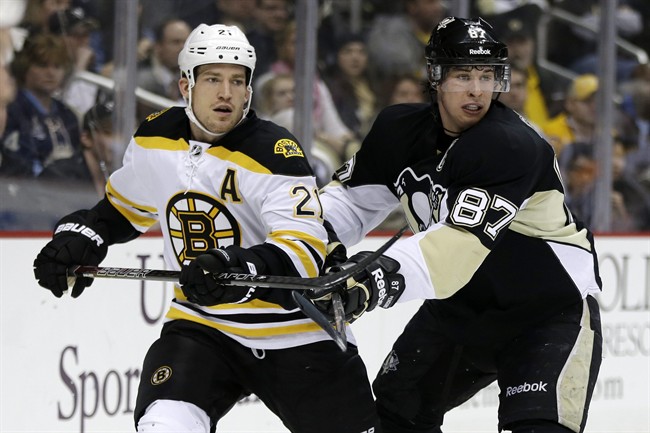TORONTO — New rules introduced two years ago to the NHL have not helped in limiting concussions on the ice, a new Canadian study suggests.

In an attempt to crack down on head injuries in the sport, the league instituted a new rule that penalizes players who hit their opponents on the head. In new research published Wednesday, scientists at St. Michael’s Hospital say that enforcing this new rule had the opposite effect, though.
“Until we change the culture and the rules and the way we play, players are still vulnerable to injuring their brains, the most critical thing in their body that they have to have for their whole lives, not just the few years they play hockey,” Dr. Michael Cusimano told Global News.
Cusimano is a neurosurgeon and professor at the University of Toronto. He’s been practicing and studying concussions and hockey safety for the past three decades.
“I was disappointed but I wouldn’t say I was surprised,” he said of his findings.
In his research, Cusimano compared the past few hockey seasons and the number of reports of concussions in players.
Read more: Pull athletes showing signs of concussion, updated guidelines warn
The new rule was first implemented in 2010-11 season and strengthened in the 2011-12 season. If you hit players from their blind side on their heads, you would be slapped with a penalty. The rule was broadened a year later so that any hit to the head would result in repercussions including possible suspensions and fines.
- ‘Shock and disbelief’ after Manitoba school trustee’s Indigenous comments
- ‘Super lice’ are becoming more resistant to chemical shampoos. What to use instead
- Is home ownership only for the rich now? 80% say yes in new poll
- Invasive strep: ‘Don’t wait’ to seek care, N.S. woman warns on long road to recovery
Before then, there were no rules or penalties specifically governing the types of hits.
After scouring through official game records, team injury reports and media coverage, Cusimano, however, found that 2009 had the lowest number of concussions compared to the years when the rules were introduced.
There were about 5.2 concussions per 100 NHL regular season games.
Sixty-four per cent of the concussions were caused by bodychecks to the head while only 28 per cent were caused by illegal incidents, such as fighting and using hockey sticks.
Cusimano said the trouble lies in enforcing the bodychecking rule — of those bodychecks to the head, only 28 per cent of aggressors faced repercussions.
“Some people get away with it, yes. Less than one-third are getting a penalty,” Cusimano said.
“If you had a more strict and overarching rule where you eliminate all contact to the head, take out interpretation and also look at secondary contact to the head, those kinds of rules would have a better chance of showing change,” he explained.
Read more: Panel finds helmets, mouth guards don’t prevent concussions
Right now, the most common penalty was for fighting at about 32 per cent while the bulk of penalties were doled out for boarding and other aggressive tactics. Hits to the head accounted for 11.8 per cent of penalties assigned.
What’s also at play is the leniency of penalties — Cusimano warns that a two-minute time out for bodychecking to the head first isn’t sufficient in scaring players from doing this.
“It’s a rule without any teeth. The two-minute penalty is a joke,” he said.
He’s calling for stricter guidelines: aggressors should be suspended for as long as their victims are out for the season.
Another example would be slapping bigger fines on teams, a larger sum that would “touch their pocketbooks,” Cusimano said.
“There is nothing to penalize the team for going out to intentionally hurt the other players all in the name of winning the game,” Cusimano said.
As a neurosurgeon who helps his patients through concussion, Cusimano is hopeful the NHL and the players’ association thinks carefully about what’s at stake.
“I would tell them that their brain is the most important thing they have in their lives and they should protect it every possible way,” he said.
Read more: Ice hockey makes up nearly half of all head injuries in young Canadian athletes
These numbers of head injuries in hockey aren’t even as high in Europe. In Olympics-level hockey, fighting is prohibited.
“But no one would say that Olympic hockey is not exciting,” Cusimano said.
There is evidence to suggest that concussions have gone up. In the Ontario Hockey League, even more stringent rules were in place as early as 2006.
Still, Cusimano didn’t see a decline in concussions — the numbers even climbed in the 2011-2012 season.
Read more: One in five high school students suffered brain injury, study suggests
For its part, the National Hockey League did not provide a response to Global’s request for comment.
“We’re not going to comment on it,” Gary Meagher, group vice president of public relations in Toronto, told Global News.
When asked if he’d like to see the study’s findings, Meagher said: “I don’t need it sent my way.”
The NHL Players’ Association did not respond to an email request for comment.
Read more: Is the NHL drafting the wrong players because of a hockey birthday bias?
Cusimano’s findings were published Wednesday in the journal PLoS One.
carmen.chai@globalnews.ca
Follow @Carmen_Chai




Comments